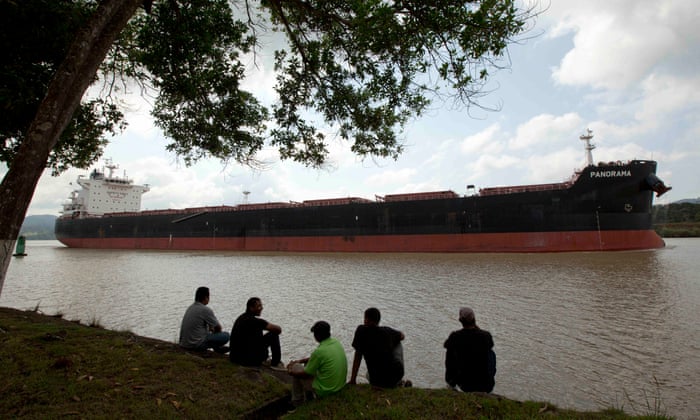Volcanoes in Panama
Panama is home to 3 major volcanoes and a total of 13. They are called Baru Volcano, also known as Volcan De Chiriquí, El Valle Volcano, and La Yeguada Volcano.

Baru Volcano, which is located in the border of Costa Rica is surrounded by rainforests. With an elevation if 11,395 feet, this volcano is the highest peak in Panama. This volcano is classified as a Stratovolcano, which is a volcano formed of layers of lava and ash. This is the youngest of the three volcanoes located in Panama. The last time it erupted was 1550 although radiocarbon data suggests that the most recent volcanic activity could have occurred roughly 500 years ago. This activity includes pyroclastic flows, lahars, and tephra fallout.

El Valle Volcano is located about 1 hour and 45 minutes North West of where my family is from, La Chorrera, Panama. Also a stratovolcano, El Valle Volcano last erupted roughly 13,000 years ago. This volcano has a caldera, which is a very large crater created by a past eruption, with walls as high as 300 feet.
https://www.google.com/maps/dir/La+Chorrera,+Panama/El+Valle,+Panama/@8.671484,-79.9553241,9z/data=!4m13!4m12!1m5!1m1!1s0x8fac99d32c9d1cd1:0xb475a52535c71ad0!2m2!1d-79.7736306!2d8.8828941!1m5!1m1!1s0x8fac5975c4c14677:0x50a12223af67c862!2m2!1d-80.17!2d8.58
Although these volcanoes have not erupted for thousands of years, you cannot predict when a natural disaster will occur. An eruption from any of these volcanoes could be very harmful to the neighboring communities. In my research I came across an article from Costa Rica regarding their concern if an eruption should occur (2105). It stated that experts from the National Seismological Network went to study the Baru Voclano. Because of how close this volcano lies to the Costa Rican Border, it raised concerns for the safety of their citizens if the worst were to happen. The Costa Rican Government was taking steps toward preparing a plan of action for its people.
Request Rejected, Smithsonian Institution Global Volcanism Program , volcano.si.edu/database/search_volcano_results.cfm. Accessed 22 Sept. 2017.
Global Volcanism Program | Barú, Smithsonian Institution Global Volcanism Program , volcano.si.edu/volcano.cfm?vn=346010. Accessed 22 Sept. 2017.
“Costa Rican Seismologists Inspect Volcan Baru.” Chiriqui Chatter, 15 Mar. 2015, www.chiriquichatter.net/blog/2015/03/15/costa-rican-seismologists-inspect-volcan-baru/comment-page-1/. Accessed 22 Sept. 2017.
“El Valle.” VolcanoDiscovery: volcanoes worldwide - news, info, photos, and tours to volcanoes and volcanic areas, earthquake information, Smithsonian Institution Global Volcanism Program , www.volcanodiscovery.com/el_valle.html. Accessed 22 Sept. 2017.
Global Volcanism Program | Barú, Smithsonian Institution Global Volcanism Program , volcano.si.edu/volcano.cfm?vn=346010. Accessed 22 Sept. 2017.
Request Rejected, Smithsonian Institution Global Volcanism Program , volcano.si.edu/database/search_volcano_results.cfm. Accessed 22 Sept. 2017.
Global Volcanism Program | Barú, Smithsonian Institution Global Volcanism Program , volcano.si.edu/volcano.cfm?vn=346010. Accessed 22 Sept. 2017.
“Costa Rican Seismologists Inspect Volcan Baru.” Chiriqui Chatter, 15 Mar. 2015, www.chiriquichatter.net/blog/2015/03/15/costa-rican-seismologists-inspect-volcan-baru/comment-page-1/. Accessed 22 Sept. 2017.
“El Valle.” VolcanoDiscovery: volcanoes worldwide - news, info, photos, and tours to volcanoes and volcanic areas, earthquake information, Smithsonian Institution Global Volcanism Program , www.volcanodiscovery.com/el_valle.html. Accessed 22 Sept. 2017.
Request Rejected, Smithsonian Institution Global Volcanism Program , volcano.si.edu/database/search_volcano_results.cfm. Accessed 22 Sept. 2017.
Global Volcanism Program | Barú, Smithsonian Institution Global Volcanism Program , volcano.si.edu/volcano.cfm?vn=346010. Accessed 22 Sept. 2017.
“Costa Rican Seismologists Inspect Volcan Baru.” Chiriqui Chatter, 15 Mar. 2015, www.chiriquichatter.net/blog/2015/03/15/costa-rican-seismologists-inspect-volcan-baru/comment-page-1/. Accessed 22 Sept. 2017.
“El Valle.” VolcanoDiscovery: volcanoes worldwide - news, info, photos, and tours to volcanoes and volcanic areas, earthquake information, Smithsonian Institution Global Volcanism Program , www.volcanodiscovery.com/el_valle.html. Accessed 22 Sept. 2017.
Global Volcanism Program | Barú, Smithsonian Institution Global Volcanism Program , volcano.si.edu/volcano.cfm?vn=346010. Accessed 22 Sept. 2017.
Request Rejected, Smithsonian Institution Global Volcanism Program , volcano.si.edu/database/search_volcano_results.cfm. Accessed 22 Sept. 2017.
“Costa Rican Seismologists Inspect Volcan Baru.” Chiriqui Chatter, 15 Mar. 2015, www.chiriquichatter.net/blog/2015/03/15/costa-rican-seismologists-inspect-volcan-baru/comment-page-1/. Accessed 22 Sept. 2017.
“El Valle.” VolcanoDiscovery: volcanoes worldwide - news, info, photos, and tours to volcanoes and volcanic areas, earthquake information, Smithsonian Institution Global Volcanism Program , www.volcanodiscovery.com/el_valle.html. Accessed 22 Sept. 2017.
“Costa Rican Seismologists Inspect Volcan Baru.” Chiriqui Chatter, 15 Mar. 2015, www.chiriquichatter.net/blog/2015/03/15/costa-rican-seismologists-inspect-volcan-baru/comment-page-1/. Accessed 22 Sept. 2017
“El Valle.” VolcanoDiscovery: volcanoes worldwide - news, info, photos, and tours to volcanoes and volcanic areas, earthquake information, Smithsonian Institution Global Volcanism Program , www.volcanodiscovery.com/el_valle.html. Accessed 22 Sept. 2017.



